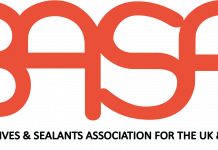Dr. Michael Cleuvers, Dr. Knoell Consult GmbH, Germany
The consumption of chemicals by many industries and modern society’s reliance on chemicals for countless manufacturing processes make chemicals production, formulation and trading one of the major and most globalized sectors of the world economy. At the same time, there are potential adverse impacts of chemicals on the environment and human health. The diversity and possible severity of such impacts makes sound chemicals management a key issue for sustainable development.
Thus, many countries are currently revising their existing chemical regulations, or introduce completely new ones, to cope with the aim of the UN/WHO initiative on a “Strategic Approach to International Chemicals Management (SAICM)”. This framework includes the commitment to achieve that by 2020, chemicals are used and produced in ways leading to minimization of significant adverse effects on human health and the environment.
However, whereas classification & labelling criteria are moving towards global harmonization via GHS (although this is currently not yet global nor completely harmonized), the different approaches for the notification of chemicals are far from harmonization. There are considerable differences e.g. in the overall scope, the affected substances, information requirements, risk assessment and the question how to deal with substances of very high concern (SVHCs). To cope with these regulatory requirements is challenging and delay or even disruption of market access is a potential, but realistic risk.
Many countries introduced chemical inventories, which list the chemicals manufactured or imported into a country, like the USA (TSCA), Canada (DSL), Australia (AICS), China (IECSC), Japan (ENCS), Republic of Korea (KECL), the Philippines (PICCS), Turkey (CICR), or Taiwan (NECI).
It is crucial to check all relevant inventories, in particular because manufacturers and/or importers of new substances have to submit notifications before they can start their business. In some countries there is not even a tonnage trigger, i.e. all new substances, although in very low amounts need to be notified. A substance may be an existing one in country „A” and “B“ but a new one in country „C” and “D“, which may trigger unexpected requirements.
In addition to new substances, some regulations also demand the notification of existing substances. Sometimes, like within EU REACH, all existing substances above a certain tonnage trigger (1 t/a) have to be notified, while e.g. in Taiwanese TCSCA this is applicable only to a list of prioritized existing substances. This is still also the case in Korea, but the current amendment which will enter into force in January 2019 will change the scope in alignment with EU REACH to all existing chemicals above 1 t/a.
Other legislations, like China´s Decree 591, or the EHSNR in Malaysia focus on hazardous substances (i.e. do not distinguish between existing and new substances), incl. a prioritization scheme. However, the criteria for classification as hazardous are not fully harmonized and the criteria for prioritization might differ.
Several countries have different notification schemes in place, e.g. simplified notifications for low tonnages and/or polymers of low concern. There might also some exemptions valid for the one country, but not for the other. Thus, check this carefully.
An important factor to determine the costs of a notification are the (often tonnage dependent) data requirements, which differ considerably. Even if you have many data at hand, you might not be able to use them in all countries relevant to you. The OECD agreement on mutual acceptance of data fulfilling quality criteria like GLP has not been globally introduced. China for example wants applicants to do the majority of the ecotoxicity testing in China, incl. biodegradation testing. The latter is also true for Japan. Thus, when determining the data requirements, it may come out that you have to perform even more than one test per endpoint (e.g. fish, biodegradation) or additional studies compared to EU REACh.
There are also clear differences globally in accepting alternative approaches to fulfill the data requirements without generating new tests, e.g. read-across, QSARs, or the use of expert statements in general. The fact that ECHA has accepted your justifications to avoid testing under EU REACH has no meaning for other authorities, particularly in Asia.
In summary, there are many important factors to consider when you are trading chemical products on a global level. An in-depth knowledge about applicable regulations in your target markets and a thorough preparation are essential to avoid any incompliance.









